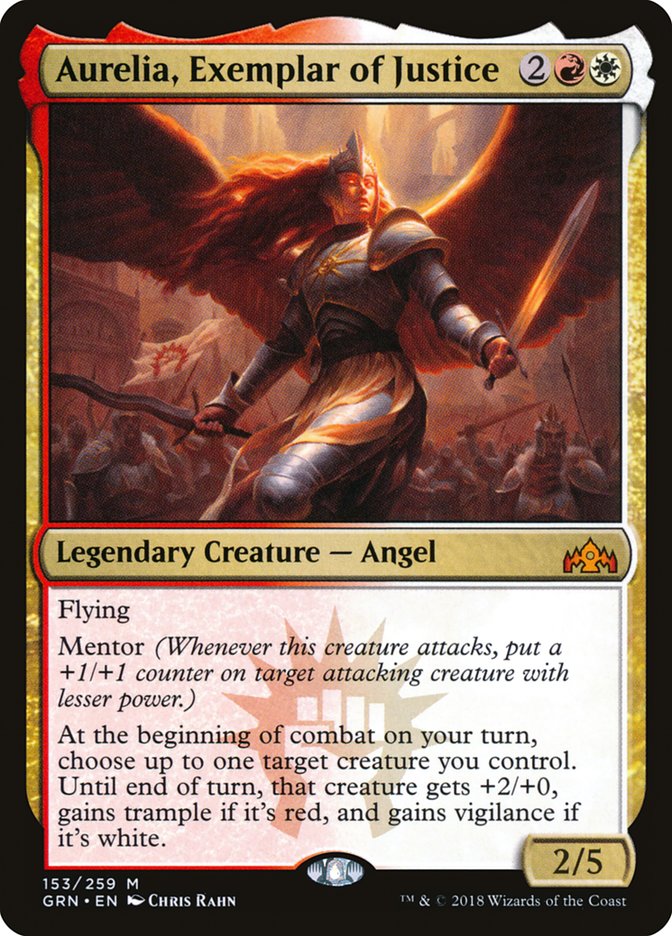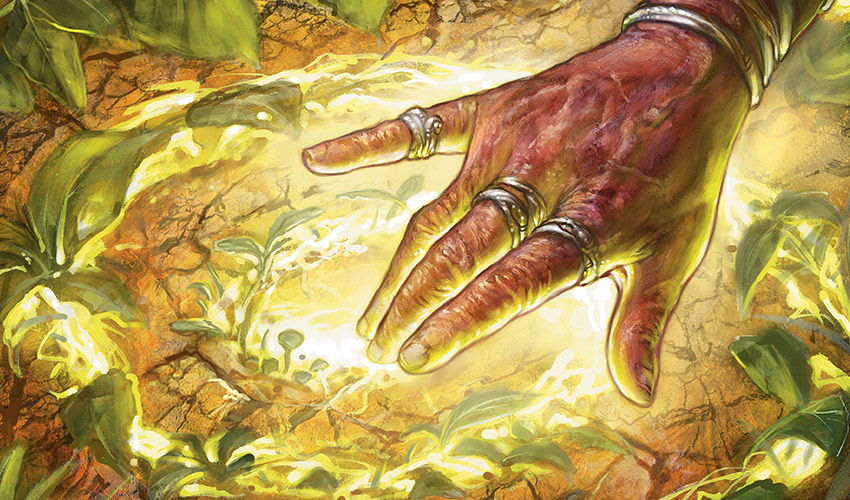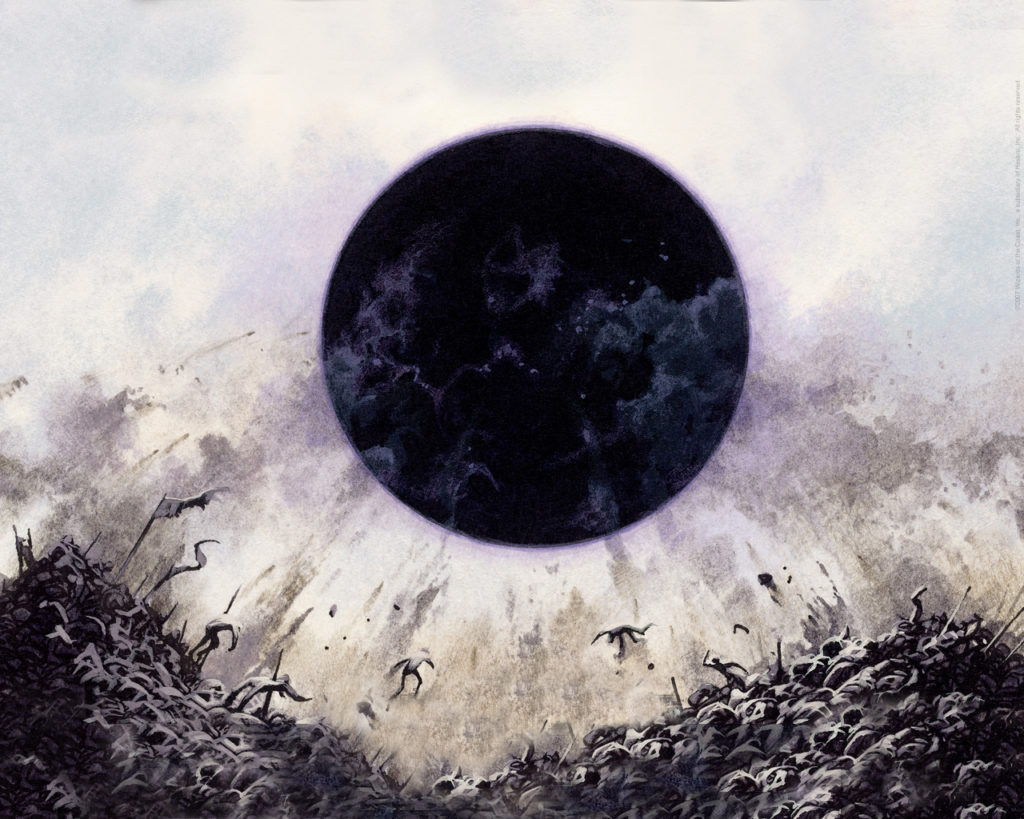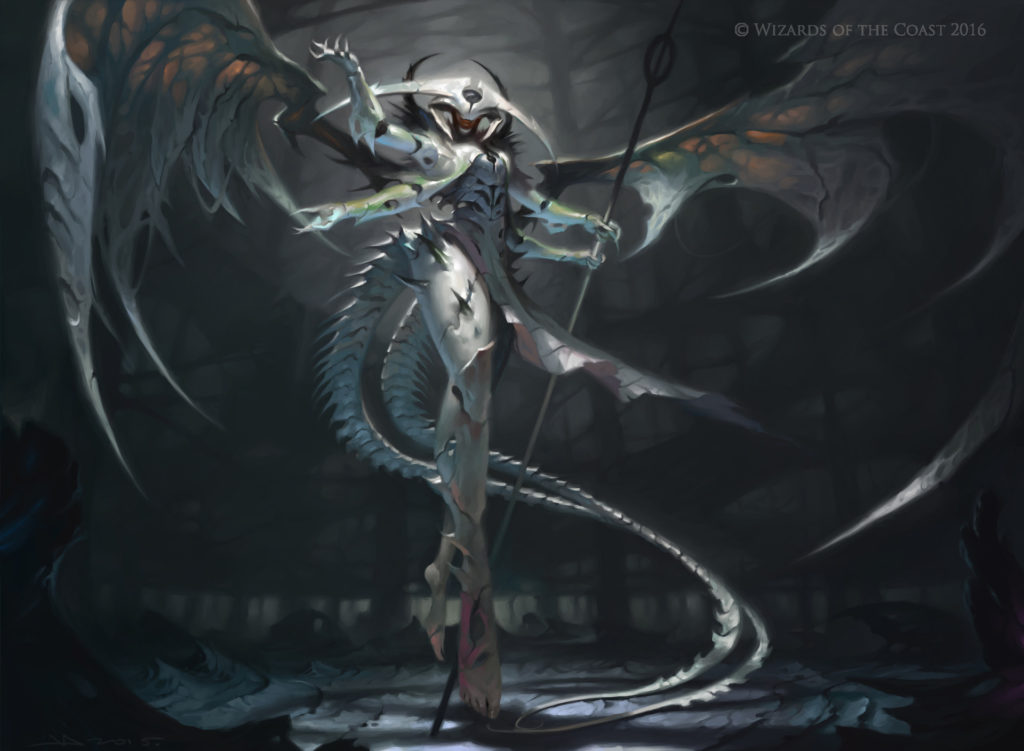In today’s edition of Legion’s Landing, Kristen highlights a peculiar trend that might shed some light on why four drop creatures can struggle in Commander.
Four drops in Commander—creature wise—are in a bit of a strange place.
It’s a pretty loaded statement, and one that requires some decent explanation to really justify. Let’s start with when I began thinking about it.
Aurelia, Exemplar of ‘Fine’

Far be it from me to hate on Aurelia, but this copy of the Boros Angel is the epitome of ‘fine’ in Commander. Aurelia, Exemplar of Justice blocks pretty well, it can attack well enough with a bunch of equipment on it, and it can squeeze out a little more damage from your smaller creatures, at least until they’re too small to attack safely.
Mentor will trigger, occasionally, but less often than you’d think—small creature based ‘swarm’ strategies aren’t amazing in EDH (aristocrats not included). There are far better ways to buff your creatures—from Always Watching and Intangible Virtue, to pricier options that do more, like Vanquisher’s Banner or even True Conviction. Aurelia is limited to buffing one creature per turn with an impermanent buff, and her own damage caps out at four.
Yet, without fail, whenever I cast this spell it eats removal like candy.
Some might say that this is the association people have with the power level of Aurelia the Warleader, and that they’re incorrectly evaluating the card. You might even say that I’m underestimating it. I think there’s some merit to the former point, but I also think there are more factors at play.
I made some notes, and decided to observe a little closer to see if I could decode any patterns.
The Anatomy of Turns 1-5

A lot of things happen on turns one through five in Commander. Usually there’s a good bit of ramping, people playing out lands, playing some utility creatures or engine pieces, and occasionally a draw spell or removal spell hits the table. Usually, people tend to be conservative with their interaction here, and only hit the trigger in case of emergency; think a Turn 1 Serra Ascendant, a particularly strong Commander like Arcum Dagsson hitting the table—that sort of thing.
What’s important here is less what is played, but more the sequencing of what is played. Anyone with any experience of Commander knows what order to play tapped lands (as soon as possible), when to ramp (as soon as possible) and when to use removal (as late as possible). It just so happens that four happens to be at a weird spot on the curve, at least when it comes to creatures.
Four drops are arguably less impactful than five drops, for example. That much is true, and the same happens when we compare mana costs of creatures as we go up the curve. They cost more for a reason. What this translates to, roughly speaking, is the desire to ramp to five or six mana as soon as possible, and try and cast those spells on curve if possible. Nobody wants to play a tapped land on turn five if they can help it. Instead, they’ll hold the basic land in their hand on turn four, and play the tapped land they just drew. This is doubly true if they’re setting up ramp. Cards like Cultivate, Kodama’s Reach, Darksteel Ingot, and Coalition Relic are all fine three-drop ramp options, and ones that you’ll likely pair with a tapped land if there’s one in your hand.
On the other end of the spectrum, if there’s a threat on the table (or likely to be one), people will want to hold up mana to deal with it. On turn 4, this can likely mean playing a two or three drop creature or permanent, and holding up something like Swords to Plowshares, Path to Exile, Reality Shift or Victim of Night. Some players might even opt to hold up something like Beast Within if there are multiple threats on the table.
If you’re wanting to set up for later turns, then you’re likely to be taking a similar approach. Four drop creatures like Aurelia, Exemplar of Justice don’t really impact the board as much here; what’s more, they have some other things going against them.
It’s Gonna Blow

Any Commander player worth their salt includes a number of board wipes in their deck, plus a suit of efficient single target removal. It’s generally accepted that the likelihood of a board wipe by Turn 5-6 is almost a certainty, barring more than one player surgically removing problem permanents. For this reason, most of what is committed to the board before then is generally seen as expendable. Either it’s a two or three-mana Commander that will be cheap enough to recast, or it’s a utility creature that has done its job.
In addition to this, people have an itchy trigger finger. Once the mule is overburdened, it will indeed Buckaroo. In the interest of efficiency, many players will fire off a cheap removal spell on turns 3-5 alongside their ramp. It’s generally a strong play, especially if they have plenty more removal in the deck (or in hand).
Playing a four-drop creature on turn four (or heaven forbid turn 5, because of sequencing) is then not a very efficient play . . . or is it?
The Four Drop Menace
It’s a bit of a trick question, because whilst I am about to make a point in favor of four drop creatures, my conclusion . . . well, spoilers.
Not all four drops are created equally. For every Aurelia, Exemplar of Justice, there’s an Atraxa, Praetor’s Voice. Just looking through the list of popular Commanders, I can see:
Alela, Artful Provocateur
Arcades, the Strategist
Arixmethes, Slumbering Isle
Atraxa, Praetor’s Voice
Breya, Etherium Shaper
Ezuri, Claw of Progress
Goreclaw, Terror of Qal Sisma
Jeleva, Nephalia’s Scourge
Jhoira, Weatherlight Captain
Jodah, Archmage Eternal
Kaalia of the Vast
Kadena, Slinking Sorcerer
Krenko, Mob Boss
Kykar, Wind’s Fury
Marchesa the Black Rose
Meren of Clan Nel Toth
Mizzix of the Izmagnus
Rankle, Master of Pranks
Rayami, First of the Fallen
Saskia the Unyielding
Shalai, Voice of Plenty
Teshar, Ancestor’s Apostle
Teysa Karlov
Urza, Lord High Artificer
Yawgmoth, Thran Physician
Yidris, Maelstrom Wielder
Zur the Enchanter
What do all of these cards have in common? Well, the majority of them are “kill on sight.” They are simply that powerful that most tables will not let a player untap with them. Now, remember, I’m only looking at popular Commanders—there other very powerful four drop creatures in Magic too, like Oracle of Mul Daya and Linvala, Keeper of Silence.
It’s general consensus, especially if you’ve played against these decks, to try and keep the Commander off the table. Due to the popularity of these Commanders over the years, deck construction and gameplay has for want of a better term ‘homogenized’ in a sense.
What does this mean? Well, it means that if there isn’t a better threat at the table, your four drop isn’t going to last long. People are used to using a removal spell by turn 4-5. And if there is a bigger threat? Well, it’ll just mean somebody pulling the trigger on a board wipe that much sooner, and you wishing you’d ramped or laid down a ‘gameplan’ piece instead of playing your soon-to-be-outclassed body.
Value Plays

The players playing decks like Atraxa or Meren know full well that they will struggle to resolve their Commander. For this reason, sequencing becomes important to them. They’ll either rush out of the gates and try stick it on turn 3, or they’ll wait until they can get some value out of it. By this, I mean playing it on a turn where they can play another spell which will either protect it, or in some way synergize to gain some incremental value knowing the creature is likely to die or be exiled very soon. It’s the same reason creatures with enter-the-battlefield abilities are generally picked over others that have to survive a full turn cycle.
Sadly, this is less relevant for a card like Aurelia, Exemplar of Justice, or many other less impressive four drop creatures—they’re simply unimpressive on later turns, and quickly outclassed by better cards. For a four drop to be good, the deck needs to be able to function without it (in the case of a Commander), or not care when it comes down. My good friend PJ put it best recently: “the more expensive (in mana) cards get, the fewer of them you can cast in a game—so you should always aim to resolve more six or higher cost creatures than four and five drops.” This is the line of thinking that has led both of us away from more ‘traditional’ concepts of Boros aggro decks, to a more competitive mid-range strategy—the true ‘aggro’ of EDH.
Bringing it Together
Given what I’ve shared so far about the sequencing of an (average) game of Commander, it seems fairly reasonable to see exactly why I was struggling to resolve Aurelia, Exemplar of Justice. She does just enough to put people on alert, at a point in the game where people are quite happy to slam the trigger on removal, single-target or otherwise.
More than this, though, I’ve noticed I’ve been struggling to enjoy playing some of the four mana Commanders available. Alela, Artful Provocateur, for example, is a Commander I’ve been super high on, but one that I’ve noticed draws similar amounts of ire. She’s also going to take a few turns to really ramp up in value, on average, and so it feels really bad to lose her prematurely. This is something I can stomach in decks like Atraxa Superfriends, where my Commander is more ‘gravy’ than anything else, or in Meren, where I can likely retrieve her from the graveyard, or ramp back into her with ease.
What’s more, given the choice between playing a creature on turn 4, playing an impactful artifact or enchantment like Greater Good or Vedalken Orrery, casting Skyshroud Claim, or holding up Crush Contraband or a Counterspell of sorts, I’ll probably choose to do anything but play a creature, unless that creature happens to be Solemn Simulacrum. The better four-drops scale with the game, anyway—cards like Ravenous Chupacabra are always good.
In essence, what started out as a series of observations to determine why a perceived ‘medium’ card was answered so often has evolved into an observation about the format, and how sequencing and gameplay patterns dictate how impactful certain plays are.
Of course, this might be atypical of your own playgroup—you might be playing with fewer removal spells, or with more combo-centric decks that win quicker. Either way, I’m hoping this dive into four-drops has at least given you some fresh perspective on the power of sequencing, and the importance of making impactful plays.
Let me know on Twitter what your experience has been.
Kristen is a lover of both Limited and Commander, and can most often be found championing the Boros Legion when called upon to sit down and shuffle up. Based in the UK, she works as a software developer, and her love for the Legion is second only to her appreciation for Lord of the Rings and Mass Effect.

